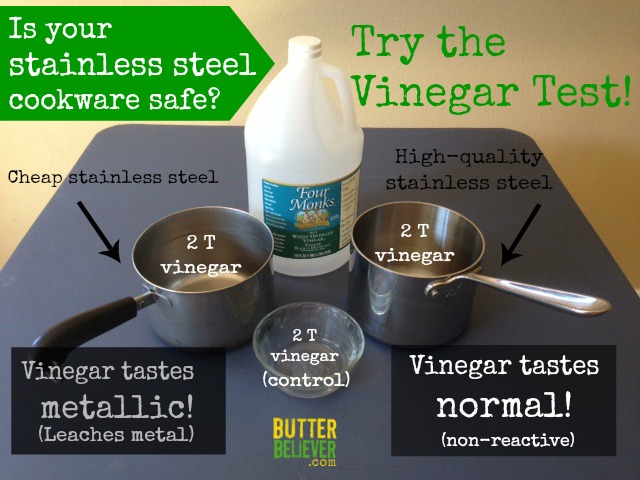Speaking of 304 stainless steel and 201 stainless steel, we certainly no stranger, but in the eyes of many consumers, the difference between the two is not directly with the naked eye can be judged. Some businesses shoddy, the use of 201 stainless steel instead of 304 stainless steel, not only will cause economic losses to customers, more serious may also lead to security incidents. So we introduce these two kinds of stainless steel material characteristics, to distinguish between 304 stainless steel and 201 stainless steel.
The characteristics of 304 stainless steel
304 stainless steel is a common material in stainless steel, processing performance, high toughness, widely used in all walks of life. 304 stainless steel is the most important element is Ni, Cr, the specific requirements are determined by the product standards, the industry generally determine that as long as the Ni content> 8%, Cr> 18%, can be considered 304 stainless steel, so 18/8 stainless steel The resulting name. 304 stainless steel is a common material in stainless steel, the density of 7.93 g / cm3. Resistant to 800 degrees of high temperature, with processing performance, high toughness characteristics, widely used in industrial and furniture decoration industry and food and medical industry. For example: 304 stainless steel pipe, 304 stainless steel pipe fitting, 304 stainless steel flange, etc
The source of 200 series stainless steel
200 Series stainless steel was born in World War II, it is the beginning as a 300 series of stainless steel alternatives in the United States successfully developed. As a result of the war, nickel at the time of the country’s strategic material, and thus the strict control of the country, the United States a serious shortage of nickel supply, so the United States took the lead in the development of manganese instead of nickel austenitic stainless steel new material.
201 stainless steel as a typical representative of the 200 series, also has a series of typical shortcomings. Chromium content of less than 18% and low content of nickel can not reach the balance of the formation of ferrite, for 200 series stainless steel chromium content down to 13.5% ~ 15%, in some cases even down to 13% to 14% Corrosion resistance can not be compared with 304. 201 stainless steel contains a lot of manganese, it can not be used for food and pharmaceutical industries.

I poured a couple tablespoons of plain white vinegar (which is of course, quite acidic) into two pots—my All-Clad 2-quart saucepan, and another generic stainless steel pan I had lying around. I also put some of the vinegar into a glass cup as a control.
After a few minutes, I taste-tested the vinegar from each.The All-Clad vinegar? Tasted exactly like the vinegar in the glass cup. But the vinegar in the cheap, generic stainless pan tasted like metal. Blech. The taste is still in my mouth as I type!
I definitely will be sticking with the All-Clad for my stainless steel cookware, personally. And, I’m pretty convinced my vinegar test is a decent way to determine the reactivity of your stainless steel. Try it out on yours and see if it passes! But if it doesn’t, I wouldn’t freak out over this. Just be mindful about cooking with very acidic things like tomato-based sauces and stuff, and avoid storing these foods in your stainless steel.
The distinguish methods of 304 stainless steel and 201 stainless steel
Compared to 304 stainless steel, 201 stainless steel nickel and chromium element content is lower than 304, and because 201 stainless steel contains a lot of manganese, 304 stainless steel manganese content of less than 2%, used to say no manganese, and strictly called low manganese. However, the color point of view, 201 stainless steel manganese element, the color will be darker than 304, 304 to light some, but it is not easily distinguishable to the naked eye.
1. Because of the difference in nickel content, 201 stainless steel corrosion resistance and acid-base resistance are lower than 304. And because the carbon content of 201 is higher than 304, so 201 to 304 than the hard and brittle, a little steel, more easily cracked, while the 304 is better toughness. If you use a hard knife in the 201 stainless steel surface scratched the surface will have obvious scratches, but the scratches 304 will not be particularly evident.
2. Because 201 stainless steel contains manganese, if long-term in the wet and salty air will rust, but 304 stainless steel will not rust. Some people may say that 304 stainless steel will rust, it is probably not 304 stainless steel.
Household stainless steel doors and windows, staircase handrails, some relatively dry environment can use 201 stainless steel. If the long-term in a humid environment, like the sink, kitchen and so you need to select 304 stainless steel, more corrosion-resistant.
3. Now on the market there is a detection of stainless steel reagent, as long as a few drops can be a few seconds What is the difference between the material Stainless steel, the principle is very simple: the elements contained in the material reacts with the reagent to produce colored material. Reagent itself is very low cost, and accurate and convenient, is a good way to distinguish.
4. You can also use professional testing equipment – spectrometer detection. This method is the fastest and most accurate, but the instrument is expensive. If the material is very important, you can find a special testing company, they will have a spectrometer.
I believe that through the above description, how to distinguish between 304 stainless steel and 201 stainless steel, we have more understanding, and hope to help you in the practical application of convenient choice.







0 comments:
Post a Comment